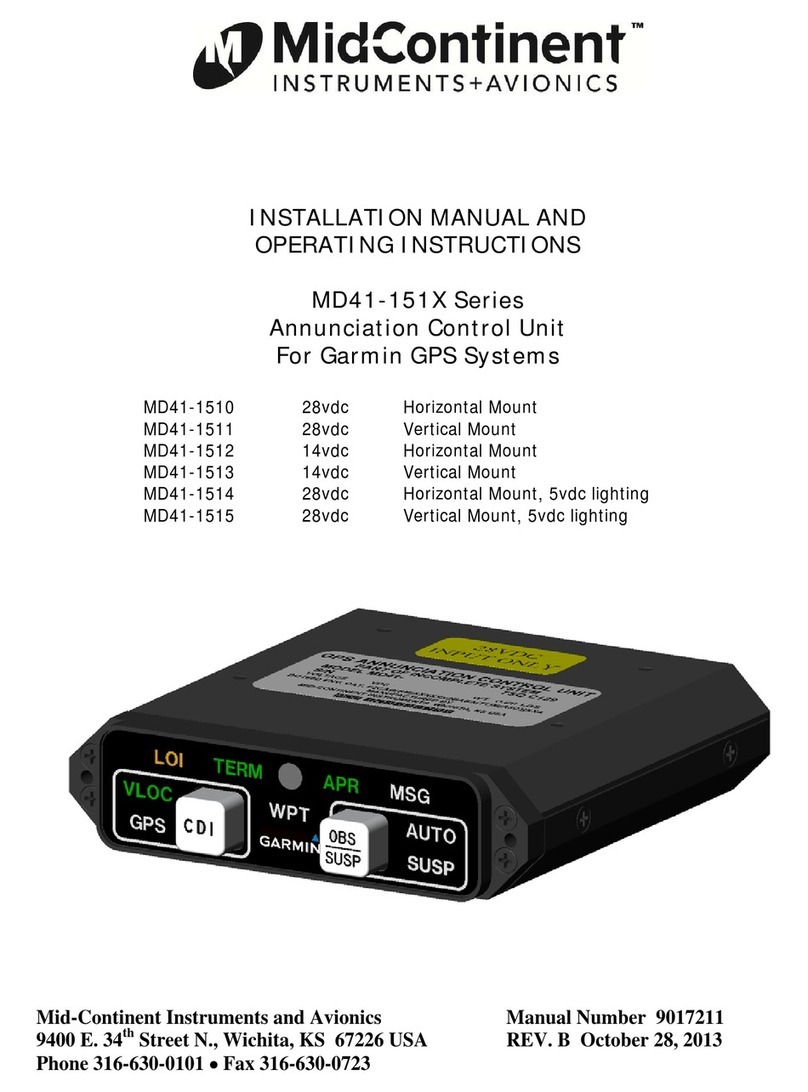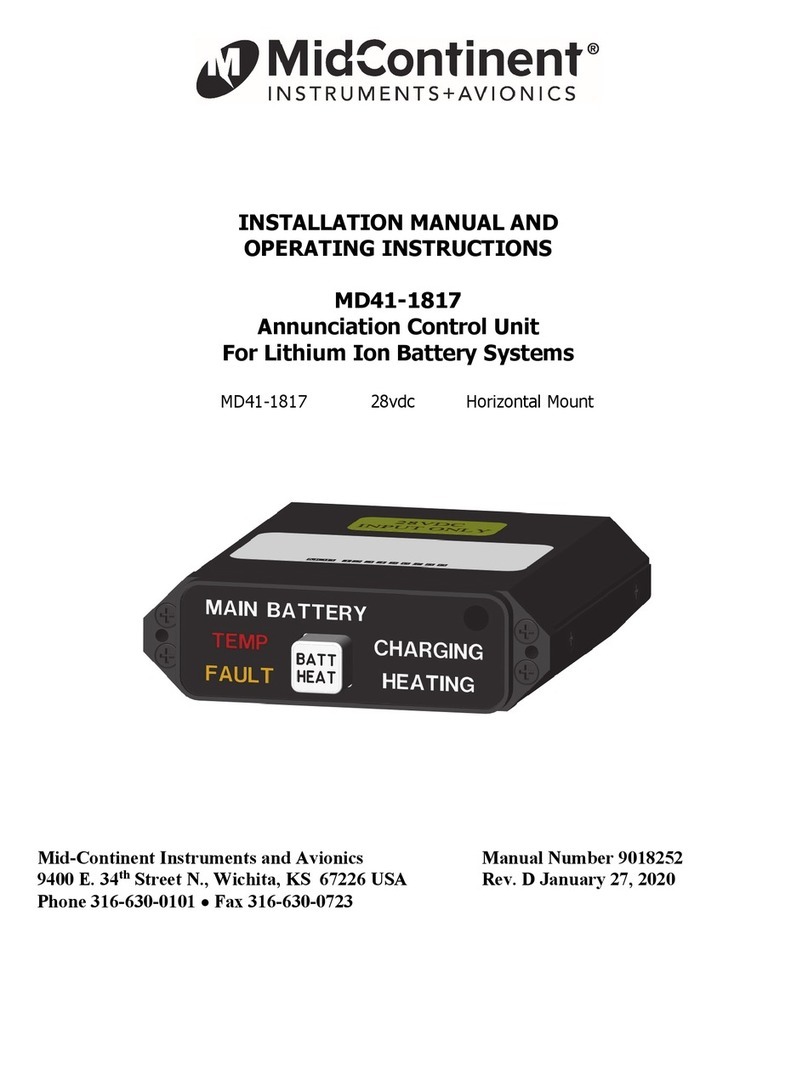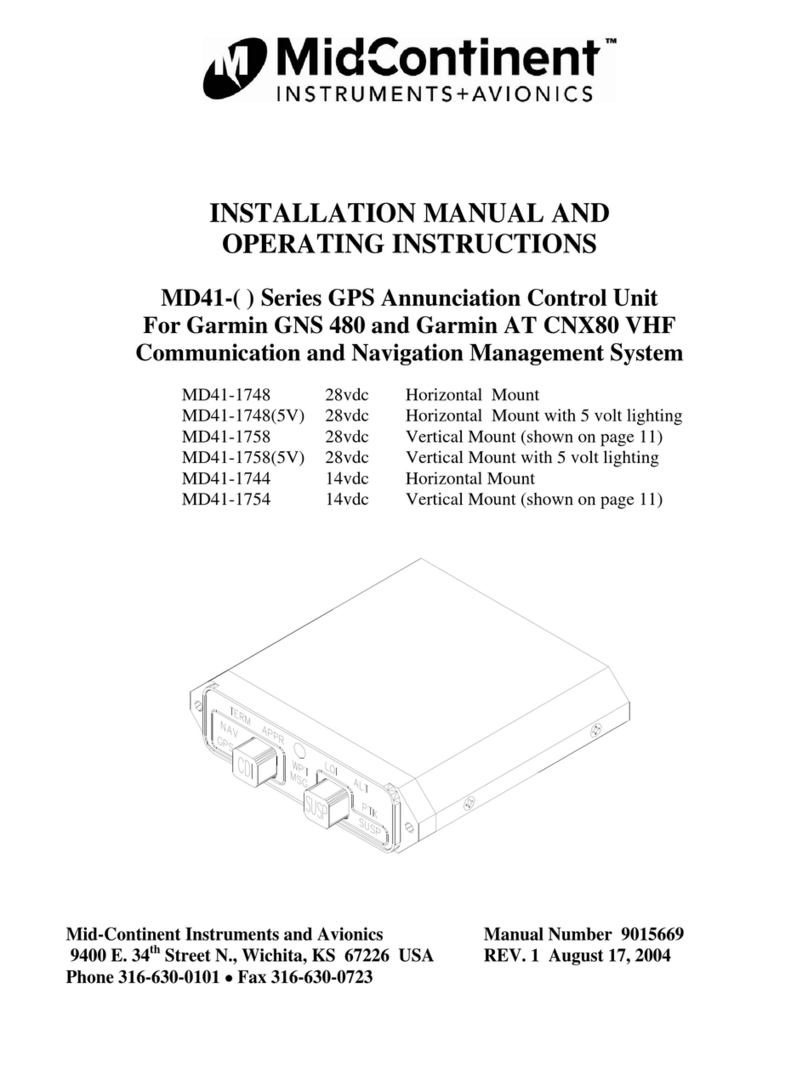
Mid-Continent Instruments and Avionics, Wichita, KS
REV. B, October 31, 2012 4 Manual Number 9017782
Table of Contents
SECTION 1GENERAL DESCRIPTION 6
1.1INTRODUCTION 6
1.2SYSTEM OVERVIEW 7
1.2.1PRE-FLIGHT MODE...................................................................................................7
1.2.2FLIGHT MODE..........................................................................................................7
1.2.3EMERGENCY MODE ..................................................................................................9
1.2.4CONFIGURATION MODE ...........................................................................................9
1.3TECHNICAL SPECIFICATIONS 10
1.3.1ELECTRICAL ATTRIBUTES....................................................................................... 10
1.3.2PHYSICAL ATTRIBUTES .......................................................................................... 10
1.3.3PERFORMANCE LIMITS........................................................................................... 10
1.3.4QUALIFICATIONS................................................................................................... 10
SECTION 2INSTALLATION 12
2.1GENERAL INFORMATION 12
2.2PARTS LIST 12
2.3EQUIPMENT LOCATION 12
2.4LIMITATIONS 14
2.5CABLE HARNESS 15
2.5.1WIRE GAUGE SELECTION ....................................................................................... 15
2.5.2CONFIGURATION MODULE ..................................................................................... 15
2.6PITOT / STATIC CONNECTIONS 18
2.7MOUNTING 18
2.8INSTALLATION COMPLETION 18
SECTION 3OPERATION 21
3.1USER INTERFACE 21
3.2PRE-FLIGHT MODE 21
3.3FLIGHT MODE 22
3.3.1MAJOR FUNCTIONS................................................................................................ 23
3.3.1.1ATTITUDE OPERATION........................................................................................... 23
3.3.1.2ALTITUDE OPERATION........................................................................................... 24
3.3.1.3AIRSPEED OPERATION ........................................................................................... 25
3.3.1.4SLIP OPERATION ................................................................................................... 26
3.3.2OPTION SETTINGS................................................................................................. 27
3.3.2.1MENU OPERATION ................................................................................................. 27
3.3.2.2ALT UNITS............................................................................................................. 28
3.3.2.3BARO UNITS.......................................................................................................... 28
3.3.2.4SYMBOL ................................................................................................................ 28
3.3.2.5ATT MASK ............................................................................................................. 29
3.3.2.6ALT TREND............................................................................................................ 29
3.3.2.7POWER OFF........................................................................................................... 30
3.3.2.8REVIEW CONFIG.................................................................................................... 30
3.3.2.9EXIT MENU............................................................................................................ 31
3.3.3BRIGHTNESS ADJUSTMENT .................................................................................... 31
3.4EMERGENCY OPERATION 31
3.4.1IN FLIGHT............................................................................................................. 31
3.4.2ON THE GROUND................................................................................................... 32

































